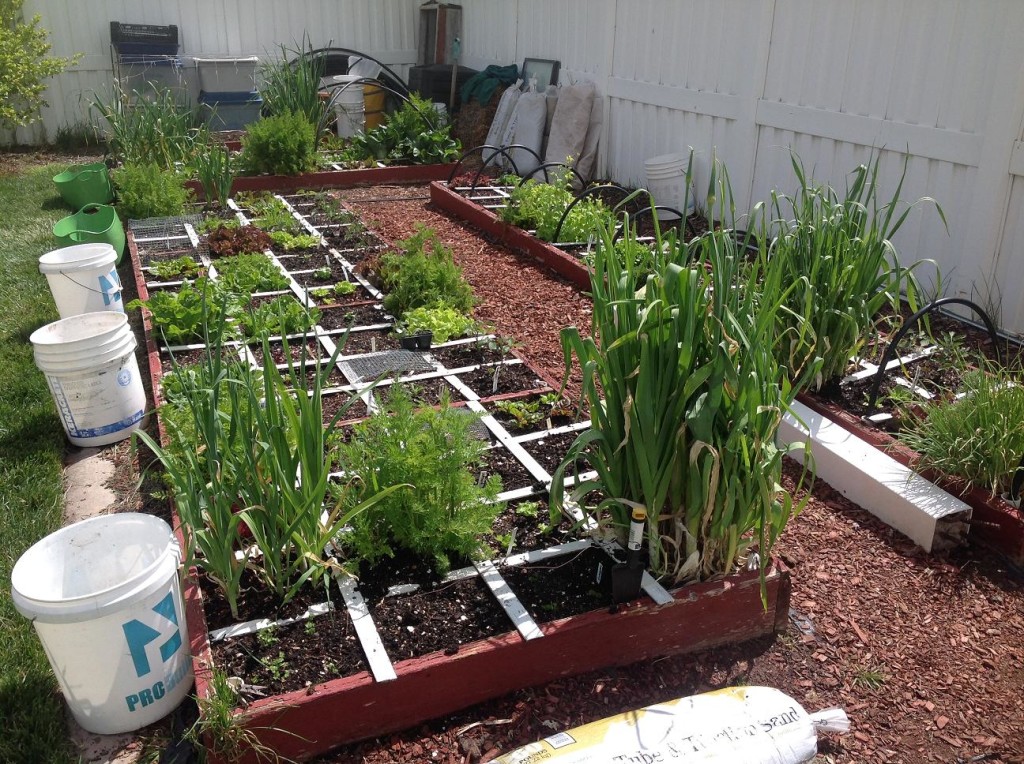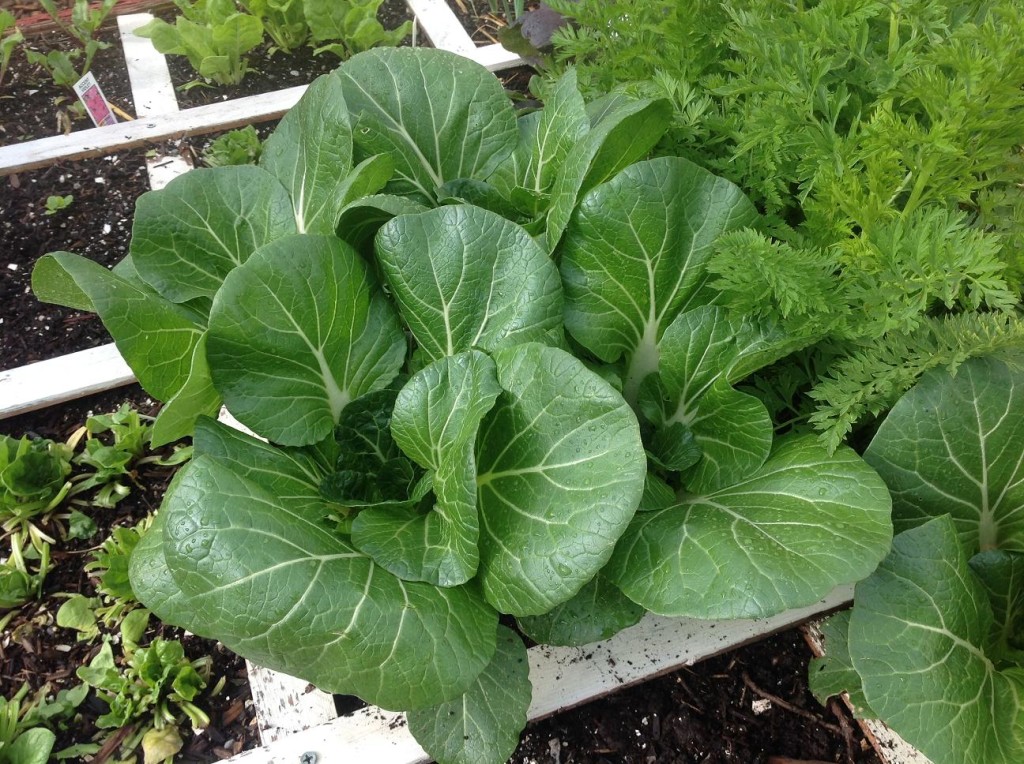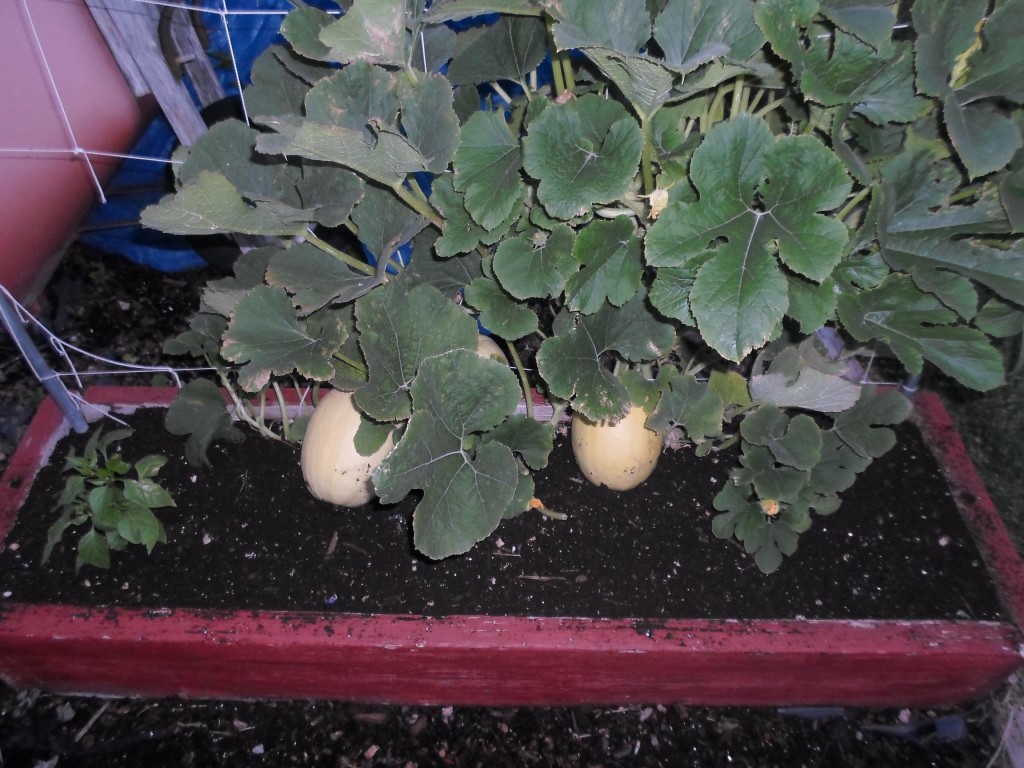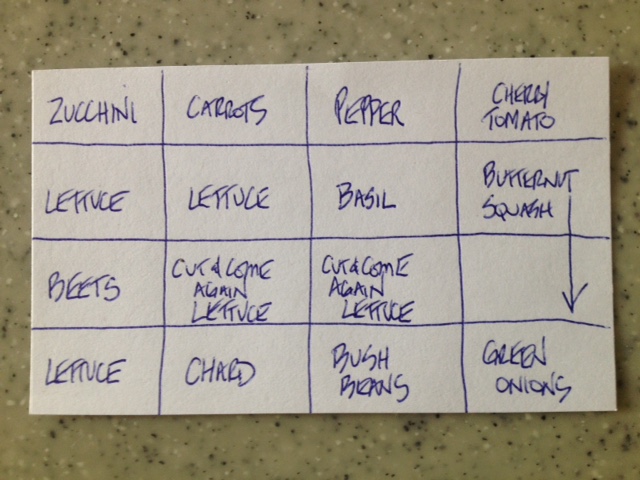 I’m often asked what to plant during certain times of the season. This is my attempt to do that with an example of what a summer square foot garden might look like. Actually, this is similar to one of my gardens.
I’m often asked what to plant during certain times of the season. This is my attempt to do that with an example of what a summer square foot garden might look like. Actually, this is similar to one of my gardens.
This is obviously one-4X4′ box. The north is on the right hand side of the card. This is where your vertical towers will be placed. That way you don’t have to worry about anything getting shaded during the summer. If you place it in any other location you’ll notice the plants behind the vertical tower getting long and leggy because they’re searching for sunlight.
Starting from the upper right hand corner and working down you’ll notice a cherry tomato plant. This will be grown vertically. Make sure you buy indeterminant tomato plants. These varieties will get to be 7-10′ tall by summers end if you pinching back the suckers that come off the main stem. Butternut squash will form a solid wall of green in about 2 months and 1 plant will take up 2 square feet. You can plant sets of green onions right now. That way you can begin to harvest them(cuttings for salads)in as little as 4 weeks. Your cherry tomato plant will be enough to feed 3-4 people all summer and into the fall. The squash and onions will take up their respective squares until the end of summer and into early fall.
The next row includes peppers, basil, a cut-and-come again lettuce variety, and bush beans. By putting the pepper plant against the back of the box you’ll be able to prevent shading that you’ll see if you put it somewhere in the middle of the box. Most bush bean varieties will have a very heavy first harvest and then a weaker second harvest. After that, the square should be emptied. If you wanted to grow and harvest beans for an extended period of time you’d have to think about growing pole beans. Basil is a classic summer herb to grow. It lasts until the first frost when it then turns black overnight and dies.
The next row includes carrots, both a cut-and-come again and regular lettuce(Romaine type), and swiss chard. By cutting the base of cut-and-come lettuce varieties(two inches above the soil line)you’ll be able to get one full harvest and then another harvest in 2-3 weeks. I know some who will cut it a second time for yet a third harvest. Your choice, but my experience is quality begins to suffer after the second cutting. Swiss chard is a great addition to your summer salads and will last well into fall. I like to cut my chard leaves while they are still small. Once they get to be more than 5-6 inches tall they get to be too chewy for our liking.
The last row has zucchini growing on a single t-post that takes up one square. I’ve been doing this for years and I’ve never had a failure doing it this way. There’s two more square of lettuce and then finally a square of beets. These lettuce varieties can be anything you like to eat. Maybe this is a spot where you want to experiment with one of the designer lettuces such as Salanova. The beets will pay off in fall. In the meantime you can enjoy the beet leaves in salads or in the “green smoothies” that everyone is drinking these days. Beet leaves in salads look nice and are exceptionally healthy.
If it were me I would plant everything at once with the exception of lettuce which I would plant every week. If it were my first square foot garden I would buy all transplants for a quick start. Eleven crops taking up 16 square feet. In another 4X4′ box you can add more peppers, lettuces, cucumbers, melons, tomatoes, potatoes, and spaghetti squash. And because we don’t thin or weed in the square foot gardening system, by the time summer ends you’ll know you haven’t worked very hard. You’ll then a lot of extra energy to then plant a fall garden.[ois skin=”1″]
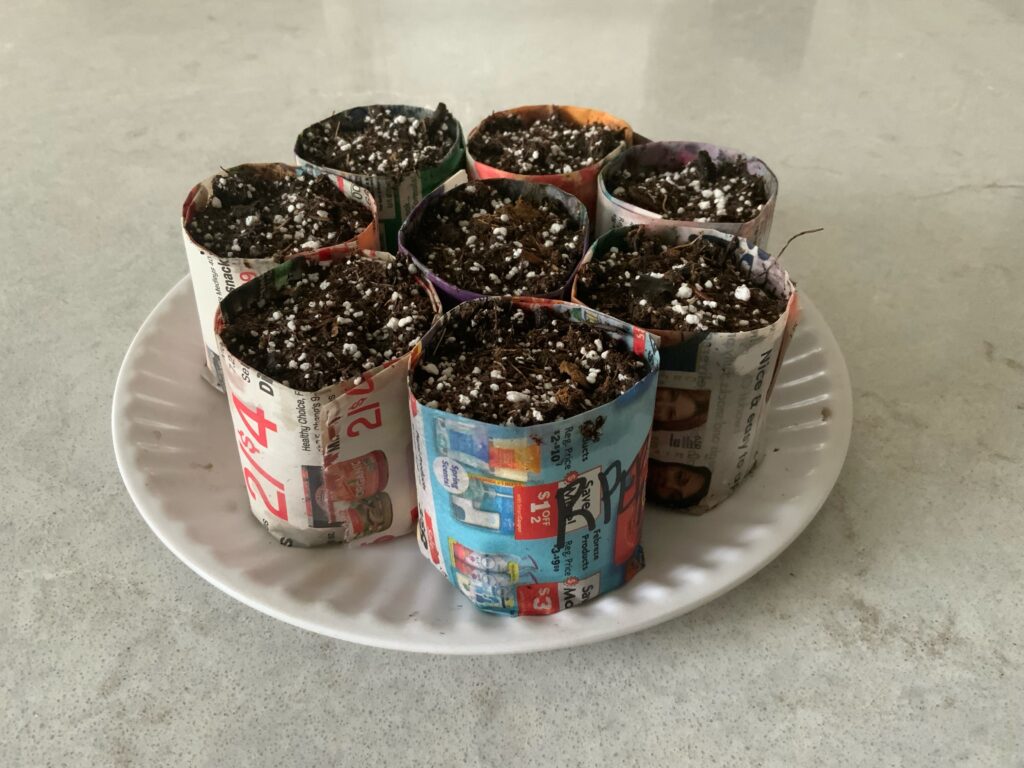
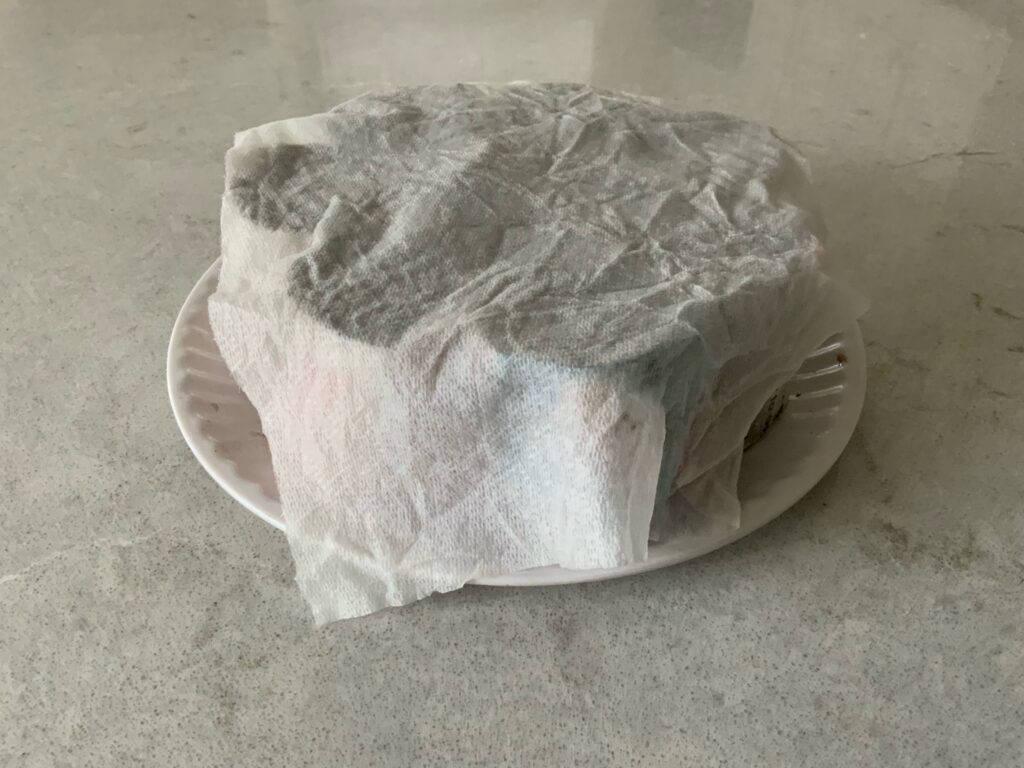 The pot maker is a great gardening tool to have at your disposal. For those who have taken my seed starting class, you know what these are and how they work. I bought mine 20 years ago from Burpee and it will out live me! You’ll not be needing to buy any more of those plastic cells that crack after the first year of use. These are made with only newspaper.
The pot maker is a great gardening tool to have at your disposal. For those who have taken my seed starting class, you know what these are and how they work. I bought mine 20 years ago from Burpee and it will out live me! You’ll not be needing to buy any more of those plastic cells that crack after the first year of use. These are made with only newspaper.
